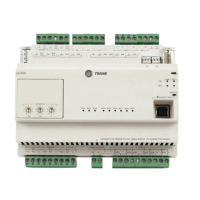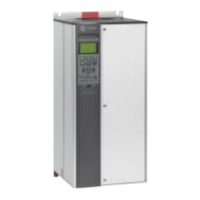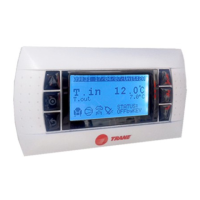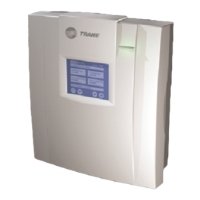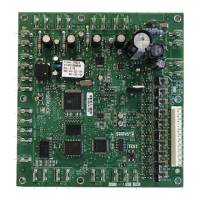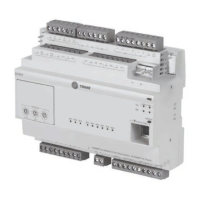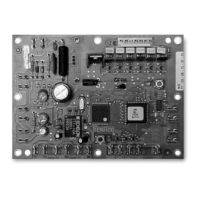Trip at Motor Speed Low Limit
In par.4-11 Motor Speed Low Limit [RPM] and par.4-12 Motor Speed Low Limit [Hz] it is possible to set a mini-
mum speed for the motor in order to ensure proper oil distribution.
In some cases e.g. if operating in current limit because of a defect in the compressor, the output motor speed
can be suppressed below Motor Speed Low Limit. To prevent damage to the compressor it is possible to set
trip limit. If the motor speed drops below this limit, the frequency converter will trip and issue an alarm (A49).
Reset will take place according to the selected function in par.14-20
Reset Mode.
If the trip must take place at a rather exact speed (RPM), it is recommended to set par.0-02
Motor Speed Unit
for RPM and use slip compensation, which can be set in par.1-62
Slip Compensation.
Note
To achieve the highest accuracy with the slip compensation, an Automatic Motor Adaptation (AMA) should be
performed. To be enabled in par.1-29
Automatic Motor Adaptation (AMA).
Note
Trip will not be active when using a normal stop- or coast command.
1-86 Trip Speed Low [RPM]
Range: Function:
0 RPM* [0 - par. 4-13 RPM] If the Trip Speed is set to 0, the function is not active.
If the speed at any time after the start (or during a stop) falls below the
value in the parameter, the drive will trip with an alarm [A49] Speed
Limit. Function at stop.
NOTE: This parameter is only available if par.0-02
Motor Speed Unit is set to [RPM].
1-87 Trip Speed Low [Hz]
Range: Function:
0.0 Hz* [0.0 - par. 4-14 Hz] If the Trip Speed is set to 0, the function is not active.
If the speed at any time after the start (or during a stop) falls below the
value in the parameter, the drive will trip with an alarm [A49] Speed
Limit. Function at stop.
NOTE: This parameter is only available if par.0-02
Motor Speed Unit is set to [Hz].
1-9* Motor Temperature
Parameters for setting the temperature protection features for the motor.
1-90 Motor Thermal Protection
Option: Function:
The frequency converter determines the motor temperature for motor
protection in two different ways:
• Via a thermistor sensor connected to one of the analog or digital
inputs (par.1-93
Thermistor Source).
• Via calculation (ETR = Electronic Thermal Relay) of the thermal
load, based on the actual load and time. The calculated ther-
mal load is compared with the rated motor current I
M,N
and
the rated motor frequency f
M,N
. The calculations estimate the
need for a lower load at lower speed due to less cooling from
the fan incorporated in the motor.
[0] No protection If the motor is continuously overloaded and no warning or trip of fre-
quency converter is wanted.
Parameter Description
66 TR200 Programming Guide
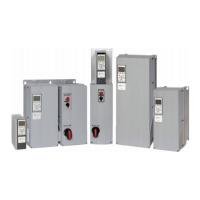
